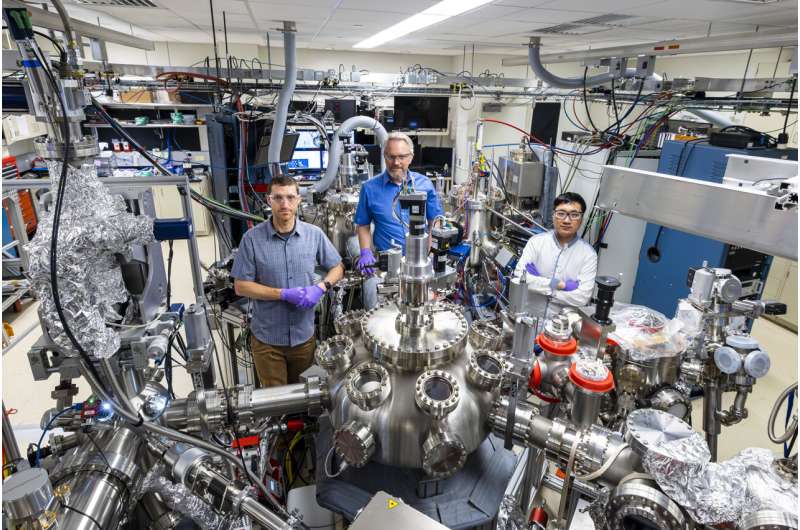Nanowerk September 21, 2023
The interface between 2D topological Dirac states and an s-wave superconductor is expected to support Majorana-bound states (MBS) that can be used for quantum computing applications. Realizing these novel states of matter and their applications requires control over superconductivity and spin-orbit coupling to achieve spin-momentum-locked topological interface states (TIS) which are simultaneously superconducting. A team of researchers in the US (Oak Ridge National Laboratory, Rutgers State University of New Jersey) have shown superconductivity in monolayer (ML) FeTe1–ySey (Fe(Te,Se)) grown on Bi2Te3 by molecular beam epitaxy (MBE). Spin and angle-resolved photoemission spectroscopy (SARPES) directly resolved the interfacial spin and electronic structure of Fe(Te,Se)/Bi2Te3 heterostructures. For y = 0.25, the electronic structure was found to overlap with the Bi2Te3 TIS and the desired spin-momentum locking was not observed. In contrast, for y = 0.1, reduced inhomogeneity measured by scanning tunneling microscopy and a smaller Fe(Te,Se) Fermi surface with clear spin-momentum locking in the topological states were found. The researchers have demonstrated that the Fe(Te,Se)/Bi2Te3 system is a highly tunable platform for realizing MBS where reduced doping can improve characteristics important for Majorana interrogation and potential applications… read more. TECHNICAL ARTICLE

… Quantum Science Center headquartered at ORNL. Credit: Carlos Jones/ORNL, U.S. Dept. of Energy.